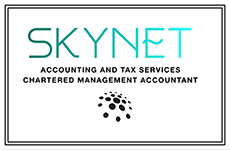Letter to HMRC regarding pool car status
A pool car can be very tax efficient but in order to get one past HMRC you’ll need to meet some strict conditions. To avoid uncertainty, use this letter to obtain confirmation from HMRC that the terms on which the car is used make it a pool car.
No private use
Get a pool car past HMRC and you can secure some excellent tax savings - no taxable benefit on the driver, no fuel benefit charge and no employers’ NI. But to obtain this status, you’ll need to gather evidence together about the use of the pool car.
Strict conditions
The conditions that have to be met are: (1) it must be available to and actually used by more than one employee; (2) it must not be used by one employee to the exclusion of others; (3) it should not normally be kept overnight at an employee’s home; and (4) it must not be used for private journeys except as a small part of a business journey. Given that the rules provide a total exemption from any tax charge, it’s not surprising that HMRC applies them very strictly.
Confirmation
Use our Letter to HMRC Regarding Pool Car Status to work through what HMRC is after. Send it in with copies of the employees’ driving licences and the Pool Car Journey Record. The decision about whether the vehicle will be accepted as a pool car will normally be taken by HMRC (at inspector level), although an appeal may be made on the issue to the First-tier Tribunal.
Related Topics
-
How to pay a tax-efficient golden handshake
One of your firm’s directors is retiring soon and the board want to pay him a lump sum to reward his long service. The trouble is that golden handshakes are usually taxable. Is there a more tax-efficient alternative?
-
Permanent increase to penalty interest rates
The new tax year saw a change to the way interest on late paid taxes is calculated. What’s changed and what are the new charges?
-
HMRC pauses some refund claims for agents
Due to security concerns, HMRC has warned that it will not process refund claims made by authorised agents. What’s going on and what alternatives are available?






 This website uses both its own and third-party cookies to analyze our services and navigation on our website in order to improve its contents (analytical purposes: measure visits and sources of web traffic). The legal basis is the consent of the user, except in the case of basic cookies, which are essential to navigate this website.
This website uses both its own and third-party cookies to analyze our services and navigation on our website in order to improve its contents (analytical purposes: measure visits and sources of web traffic). The legal basis is the consent of the user, except in the case of basic cookies, which are essential to navigate this website.